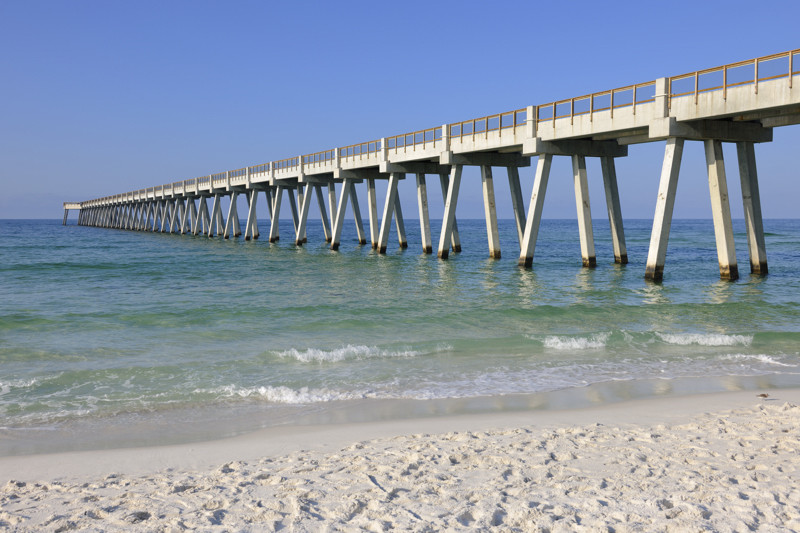The USMC has been hitting the beaches with mechanized transport since before WWII, so in addition to simply flying in on helicopters, the Marines can hit the beach in several ways.
The most obvious one is to dispense with carrying vehicles, and simply ride into battle in your own amphibious fighting machine. The USMC uses the AAV-7, which can swim ashore, and then continue inland to battle with a turret mounted .50 HMG and a 40mm grenade launcher, plus 25 armed to the teeth Marines ready to debuss on the objective.

AAV-7

AAV-7 ashore
The Royal Marine Commandos use the "Viking" Marginal Terrain Vehicle (MTV), which is also amphibious, although having lower levels of performance than an AAV-7. It is much more versatile ashore, capable of crossing terrain that no other vehicles can even approach:

Royal Marine Commando Viking MTV
If you really must transport the various vehicles, the USMC uses the LCAC, a hovercraft which can approach the beach very rapidly, and even fly over the beach and move inland so long as the ground it relatively flat. Getting past the sharp rocks might be an issue depending on the size and sharpness, getting the "skirt" damaged makes the hovercraft much less capable of maintaining an air cushion.

Formation of LCAC's
Finally, the US Navy and Marines are experimenting with a new vehicle which has many of the features of a Viking and an LCAC. The prototypes are small, but a full sized version is supposed to take cargo as large as tanks from ships, swim ashore and deliver the payload inland. Meet the UHAC (Ultra Heavy-lift Amphibious Connector)

The enormous "paddles" serve as a track ashore
So if you are looking for alternatives to air delivery, here are how the USMC and Royal Marine Commandos do it.







![Ferry with long pier[1]](https://i.sstatic.net/oUXLK.jpg)










